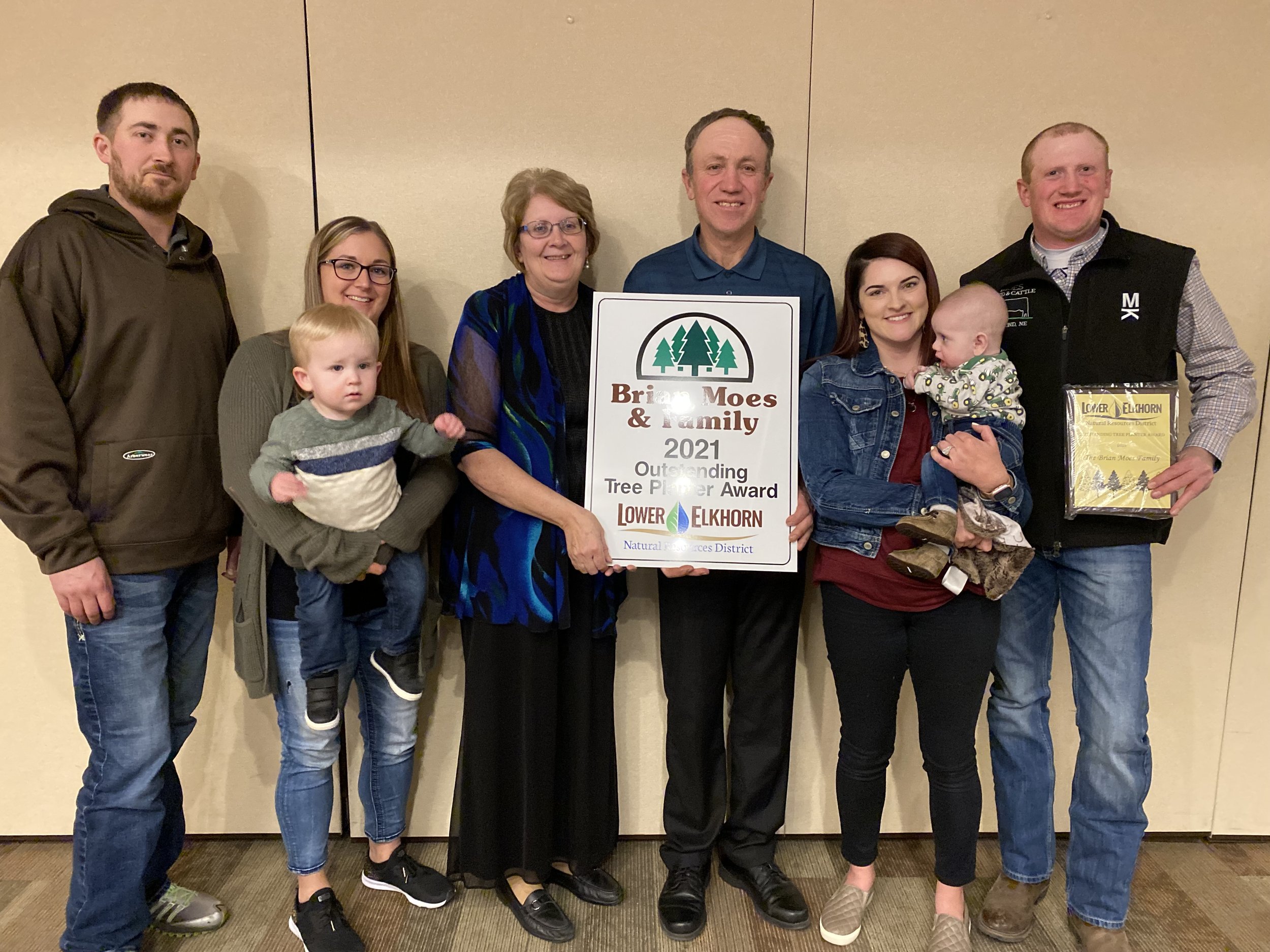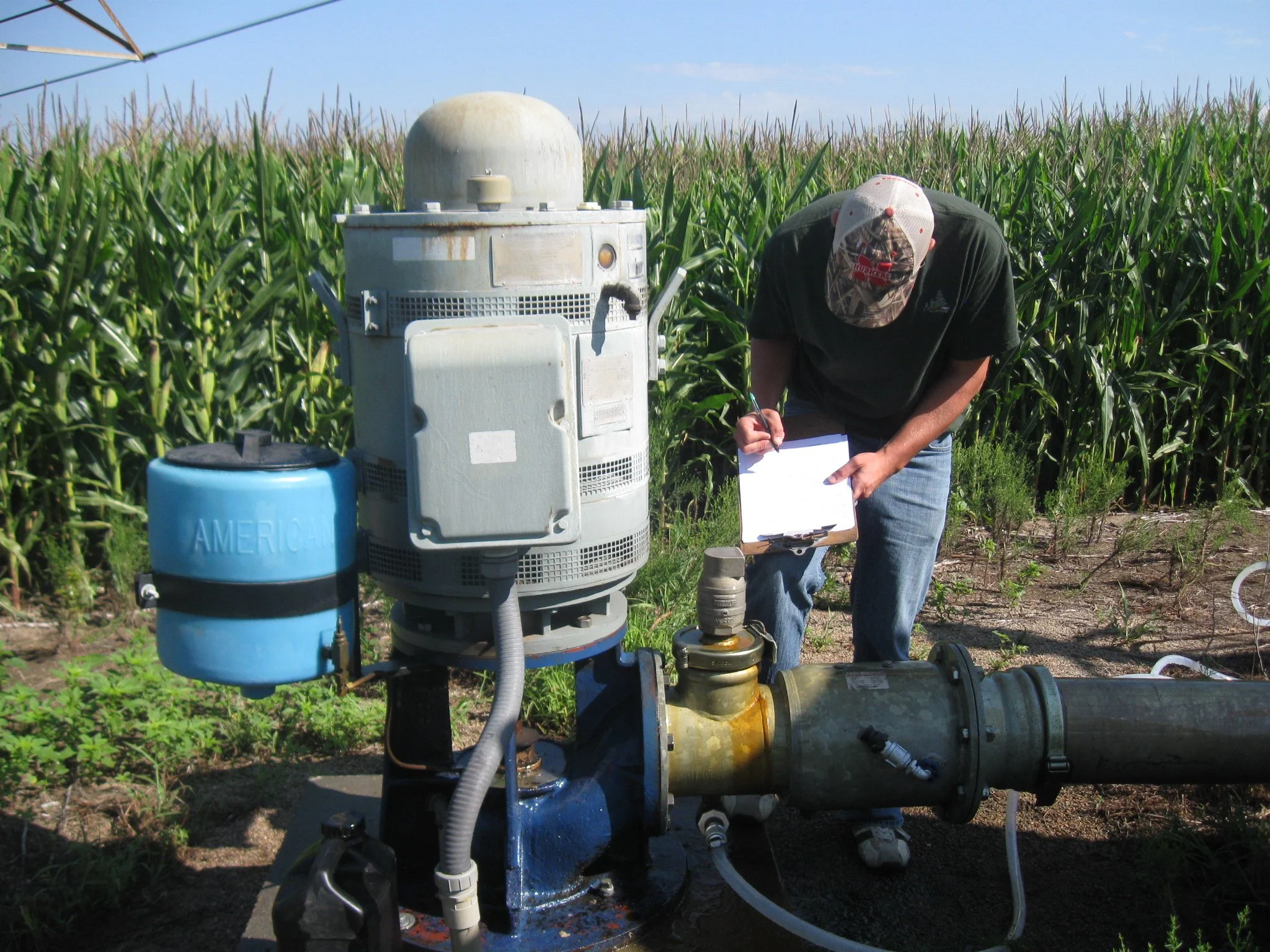The city of Battle Creek, in northeast Nebraska, is located on the right descending bank of the Battle Creek, approximately two miles upstream from the confluence with the Elkhorn River. The city lies on low, flat, terrain which is prone to flooding during rainfall events. Significant damages to residences, businesses, agricultural land, and public infrastructure have occurred over the past 20 years. A look at the history of the planning in this watershed will help answer some of the questions recently raised.
Potential flood reduction projects in the watershed were first discussed by the Lower Elkhorn Natural Resources District (LENRD) in the 1970s as envisioned by the U.S. Army Corps of Engineers Elkhorn River Basin Recon study. In 1975, Madison County’s Comprehensive Plan included a proposed flood control structure in the Battle Creek Watershed.
The city of 1,200 suffered major flood damage from storms on May 31, 2007, estimated at over $2 million, with more than 400 of the 600 homes within the city flooded.
An official request came from the Battle Creek City Council to the LENRD Board of Directors at their September 2007 meeting.
Battle Creek City Administrator, Mike Fleer, said, “Our city council approached the LENRD for help. We asked them to investigate our options and give us some direction.”
He continued, “Whether it be a diversion channel, a dam, or something else, we have to do something. It comes down to, what is the best option for this location and can we get someone to help us pay for it. We cannot do it alone.”
The LENRD, in cooperation with the city of Battle Creek, then completed several evaluations of flood risk reduction alternatives for the watershed above the city.
In 2009, the evaluation process began with JEO Consulting Group, identifying multiple alternatives for the watershed including a diversion channel, a levee, and a reservoir. Included in these evaluations was a survey of a dam site, size of dam, and cost-estimates.
In 2011, preliminary geotechnical investigations for alternative projects began, along with the modeling of downstream impacts and investigating grant options.
In 2014, JEO determined the primary flood risk reduction alternatives included a potential overflow diversion channel or a potential flood risk reduction dam. The 2 reservoirs proposed for the area, south of Battle Creek, were a 160-acre pool for approximately $17 million and a 1,200-acre pool for $36 million.
After the 2014 study, the LENRD board asked the Battle Creek City Council to prioritize a specific project and to identify the amount of financial contribution the city could provide.
After another devastating flood in March 2019, Battle Creek’s City Council met and voted to explore options for a 1,200-acre flood-control reservoir on the south side of Battle Creek.
The city of Battle Creek again approached the LENRD board, asking if the potential flood-control projects that were deemed feasible in 2014 could be revisited.
Fleer said, “Not long after flooding occurs, we tend to forget about it, until the next flood event. We can go for many years with dry conditions, but when that flood happens again, then we hear people say, ‘we have to do something, we should have taken care of this the last time this happened.’ So, the question remains, what are we going to do to protect Battle Creek?”
In May 2019, the LENRD Board voted to move ahead with the process of securing funding for a flood-control project, and to file a letter of intent with FEMA/NEMA for flood protection for Battle Creek. The board also voted to direct staff to contract with consulting firms to prepare all the necessary documentation and complete a grant application to the USDA Watershed and Flood Prevention Operations (WFPO) program.
In November 2019, the LENRD received the WFPO grant of $390,000 to complete the Battle Creek Watershed Plan. This plan aims to reduce the overall flood risk potential in the Battle Creek Watershed, which includes the city of Battle Creek, and provide flood resiliency for surrounding agricultural land.
Battle Creek City Council member, Eric Kraft, said, “We’re working to find a feasible project to protect this area. We have to do something to reduce damages to homes, businesses, and ag land due to the frequent flooding from the creek.”
He continued, “The city can’t afford to do this on its own. We are asking for help to pay for studies to help us address the problems with minimal impact to the landowners.”
The city of Battle Creek has tried to remediate some of the problems occurring within the city limits.
Kraft, said, “We tried doing some of these things ourselves. We attempted to clean out the creek with volunteers and realized we needed to hire a contractor. We did what we could, but it wasn’t financially feasible to continue. We reconstructed the intersections and created more drainage and a way to get the water moving out of town. We mowed and dug out the ditches where we could and even on some of the county’s property.”
Kraft explained there is only 18 inches of fall from the northwest corner of town to the southeast edge of town.
“We can attempt to manage the east side of town, because we’re only dealing with the drainage of about 700 acres. When you look at the flooding from the creek itself, it’s massive. That’s 91 square miles of flooding that cannot be controlled,” said Kraft.
Kraft added, “I’ve been in Battle Creek 18 years, and in 5 years it flooded 3 times. Sometimes just the east side and sometimes just the west side. It’s crazy what nature can do. Unless you’ve seen it with your own eyes, it’s hard to imagine. Some of the residents here don’t ever want to see it again, they are horrified.”
“It’s a tough decision. I have good friends who would be affected by this. The voters elected me to do what’s best in the city of Battle Creek, and that’s what I need to do,” Kraft said.
Fleer says he’s just as torn. “It’s been a struggle. Trying to find a solution to protect the property in town and worried for the landowners south of town,” he said.
“I know the LENRD directors weren’t all on board for a dam, because of taking farmland. I understand that, I grew up on a farm. It’s an ongoing struggle of how are we going to protect Battle Creek with the least amount of impact to the citizens of the area,” said Fleer.
The city of Battle Creek is currently not in a FEMA declared flood plain. If it gets labeled as such, then valuations would go down and homeowners would be forced to buy flood insurance.
Fleer said, “I’m looking forward to seeing the 90% study completion update later this year from JEO.”
Based on the preliminary evaluation, the construction of three flood risk reduction dams located upstream of Battle Creek were identified as viable alternatives to address the city of Battle Creek’s flooding problems.
LENRD General Manager, Mike Sousek, said, “There are multiple benefits to think about when considering a flood reduction project of any size. First and foremost is flood reduction. Along with that comes the benefits of recharge and retiming as well as improved water quality and recreation.”
------
The majority of the Battle Creek Watershed is in Madison County with small upstream portions located in Boone County. The city of Battle Creek is situated in the lower portion of the Battle Creek watershed; nearly the entire watershed contributes flows to the stream channel adjacent to the city. The watershed of the Battle Creek upstream of the city is approximately 91 square miles and consists of mostly agricultural land uses.
One of the LENRD’s 12 responsibilities includes flood prevention and control as well as prevention of damages from flood water and sediment.
Stay connected with the LENRD by subscribing to their monthly emails.














